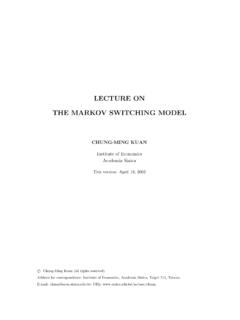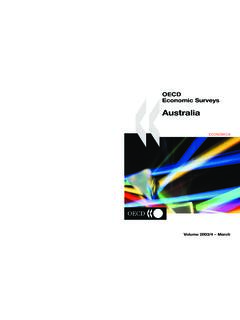Transcription of BIS銀行資本適足率(BIS Capital Adequacy Ratio, CAR)
1 BIS (BIS Capital Adequacy Ratio, CAR) 1. Basel Accord ( ) 1988 (Bank for International Settlement) (Basel Committee on Banking Supervision) 10 G10 1974 1973 1979 ( Capital Adequacy ) 1988 Basel Accord 8% 1992 8 1993 1988 Basel Accord (1) (2) Tier 1 Tier2 (3) 1996 Basel Accord Tier 3 market risk 2. BASEL II Basel I 1999 2001 (minimum Capital requirements, supervisory review, and market discipline) (Three Pillars) 2004 6 26 (Basel II) 2006 1 2 3 8%, (MRC+ORC) 1 4%, (MRC+ORC)Tier Capital TierCapital Tier CapitalCook RatioCredit Risk Weighted AssetsTier CapitalCredit Risk Weighted Assets++= + + where MRC=market risk charge, ORC= operational risk charge.
2 3. Tier 1 Capital (Core Capital ), Tier 2 Capital (Supplemental Capital ), and Tier 3 Capital1 (1) ( ) ( ) (For non-cumulative perpetual debt, if payments are missed, they do not accrue and the cash flow is lost. Thus, noncumulative perpetual debt is almost identical to typical preferred shares in the aspect that if payments are missed, they do not accrue and the cash flow is lost. The only difference being that preferred shares often have the option of conversion to common shares, and is junior to debt.) (2) 1 Tier 1 Tier 2&3 (1) CRC(credit risk charge) 50% Tire 1 Capital (2) Tier 3 Capital MRC(market risk charge) Tier 3 Capital Tier 1 Capital 250% ( Tier 3 Capital Tier 1 Capital 250% Tier 2 Capital 250%) (3) ( ) Upper Tier 2 UT2 ( ) Lower Tier 2 LT2 ( ) 20% LT2 UT2 (3)
3 Tier 3 Capital , T3 4. Risk Weighted Assets Compare Basel I and Basel II in computing credit risk charge. Basel I (Risk-Weighted Assets, RWA) = (Conversion Factor) Risk-Weighted Assets = balance sheet assets + off-balance sheet (OBS) assets + (Required Market Risk Charge) =offAA++ MRC = MRC,jjjj jaE + + where j =credit risk weight, and ja=asset j, j = risk weight of counterparty, j =credit risk conversion factor, and jE= credit exposure (credit equivalent value Credit Exposure OBS default OBS ) Basel II (Risk-Weighted Assets, RWA) (Conversion Factor) Risk-Weighted Assets = credit risk-weighted assets (balance sheet assets + off-balance sheet assets)
4 + (Required Market Risk and Operational Risk Charges) =offAA++ (MRC+ORC) Basel II Standardized Approach, Foundation Internal Rating Based (IRB) Approach, Advanced IRB Approach An Example: Standardized Approach (1) (Standardized approach) 100% (2) (foundation IRB approach) (Probability of Default, PD) PD (Loss given Default, LGD) (Exposure at Default, EAD) (Effective Maturity, M) (3) (advanced IRB approach) PD LGD EAD M Market Risk Charge (MRC) and Operational Risk Charge (ORC) (1) Standardized Approach Internal Model Approach interest, equity, foreign exchange, commodity (2)
5 Basel II (Operational risk)











